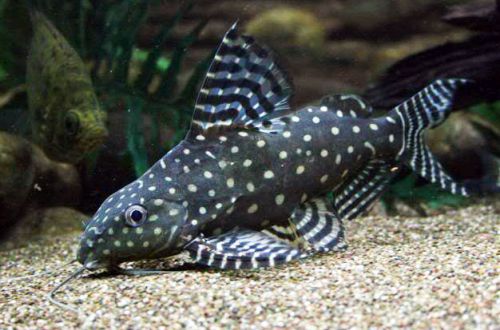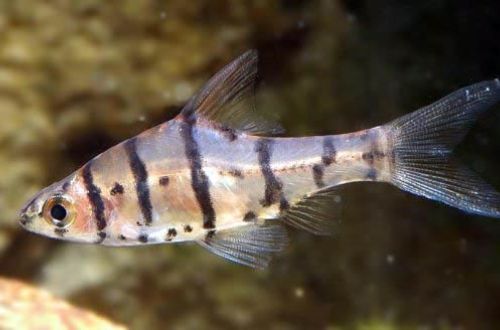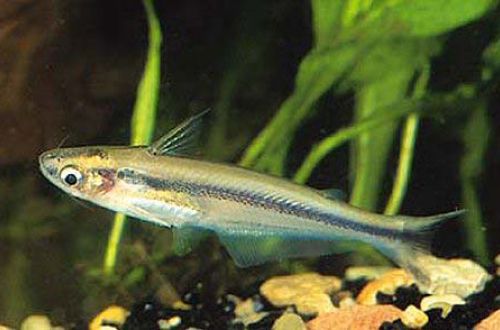
Kadinal
Cardinal, scientific name Tanichthys albonubes, belongs to the Cyprinidae family. The most popular aquarium fish, easy to keep and breed. As of 2010, there are four well-established breeding color forms, but only two of them are most widely used – close to natural color and with a predominance of red.
ọdịnaya
Ebe obibi
The homeland of the species is the territory of modern China. Currently, fish are practically not found in the wild and are on the verge of extinction, listed in the Red Book. Several relict populations have been found in the coastal province of Guangdong (southern China) and in the province of Quang Ninh, northeast Vietnam. They live in slow-flowing rivers and streams, prefer to stay at shallow depths up to 60 cm near dense coastal aquatic vegetation.
Ozi nkenke:
- Olu nke aquarium - site na 60 lita.
- Okpomọkụ - 14-22 Celsius C
- Uru pH - 6.0-8.5
- Water hardness – soft to hard (5-21dGH)
- Ụdị mkpụrụ - ọ bụla
- Ọkụ - emerie ya
- Mmiri brackish - mba
- Ntugharị mmiri - adịghị ike ugbu a ma ọ bụ mmiri dị jụụ
- Ogo azụ ahụ ruru 4 cm.
- Nri - nri ọ bụla
- Ọnọdụ - udo dị jụụ azụ
- Idobe n'ìgwè atụrụ nke mmadụ 10
Description
Adults reach a length of 4 cm. Females are somewhat larger than males, but less colorful. There are several color forms. One is closer to natural coloration, the dominant color is gray with a wide bright pink stripe stretching from head to tail. The wide fins have a pale yellow edging. Another form has a similar color, but with a pronounced red pigment, which is painted on the back of the body, tail and edges of the fins.
Food
They accept all types of dry, frozen and live food. A combination of different species is the most preferred option, in this case the fish show their best color. Feed 2-3 times a day in the amount eaten in 5 minutes, remove leftovers in a timely manner to prevent water pollution.
Nlekọta na nlekọta, nhazi nke akwarium
The recommended volume of the tank for one flock of fish starts from 60 liters. The design is arbitrary, however, a combination of a dark substrate and a certain amount of floating plants is considered the best option. Artificial or natural snags, roots and / or branches of trees are used as decor.
The standard set of equipment consists of filtration and lighting systems, an aerator. The cardinal prefers relatively low temperatures, so there is no need for a heater if the aquarium is set up in a living area.
Water conditions are characterized by a weak internal flow, temperature, pH and dGH parameters are in a wide acceptable range of values, so the preparation of water is not associated with great difficulties, in most cases it is enough to defend it during the day.
Aquarium na-arụ ọrụ kwa izu iji dochie akụkụ mmiri (20-25% nke olu) na mmiri dị ọhụrụ, ihicha mkpụrụ mgbe niile site na mkpofu organic na iwepụ ihe ncheta na iko.
Omume na ndakọrịta
Calm peace-loving fish, goes well with other species of similar size and temperament, able to live in similar temperature conditions. The content is flocking from 10 individuals of both sexes; within the group, males are forced to compete with each other for the attention of females, which contributes to an increase in the brightness of their color.
Ịzụ / ozuzu
Cardinal refers to spawning species, females scatter eggs in the water column, and males at this moment fertilize it. Parental instincts are poorly developed, immediately after spawning, the fish can eat their own caviar and fry that have appeared.
A na-atụ aro ka a na-azụ nwa na tank dị iche - aquarium spawning, iji chebe ụmụ site na azụ ndị toro eto. Nhazi ahụ dị mfe, a na-akwụ ụgwọ isi n'ala, ọ kwesịrị ịgụnye akụkụ nke oke zuru oke nke na-adịghị adabara ibe ya, na-akpụ voids, dịka ọmụmaatụ, pebbles ma ọ bụ ihe eji achọ mma iko. Mgbe àkwá ndị ahụ na-emikpu n'ala, ọtụtụ n'ime ha na-adaba n'ime oghere ndị a wee bụrụ nke a na-apụghị inweta azụ. A na-enwetakwa mmetụta yiri nke ahụ mgbe ị na-eji nchara dị mma, nke edoziri na ala.
Ụzọ ọzọ ị ga-esi hụ na nchekwa akwa bụ iji obere ihe ọkụkụ na-eto eto ma ọ bụ mosses dị ka Riccia na-ese n'elu mmiri na Javanese moss, nke a na-akụ n'ọtụtụ n'elu ala (na nke a, ala nwere ike ịbụ ihe ọ bụla). . Oke thickets nke osisi nwere ike inye a pụrụ ịdabere na ndo maka àkwá ọ dị njọ karịa pụrụ iche ala.
Ogo nke aquarium spawning na-abụkarị 20-30 lita, ọkara jupụtara. Ngwa eji eme ihe bụ igwe ikuku, ihe na-ekpo ọkụ na ihe nzacha ogbo dị mfe nke ike dị ala iji gbochie nsị na mberede nke àkwá na ighe. Spawning na-apụta na ìhè na-adịghị mma, yabụ na mbụ ọ dịghị mkpa maka isi iyi ọkụ.
The impetus for the beginning of the mating season is the establishment of a water temperature in the region of the upper permissible mark of 20–21 ° C at a neutral or slightly acidic pH value, as well as the inclusion of protein foods in the daily diet – bloodworms, daphnia, brine shrimp in live or frozen form.
After some time, the females become noticeably rounder, and the males will begin to actively show signs of attention to their chosen ones. At this point, you should prepare a separate tank and fill it with water from the general aquarium, then transplant several females and the most colorful males there. The easiest way to determine the end of spawning is by females, they will become slender.
A na-eweghachi azụ ndị ahụ. Fry ga-apụta na awa 48 - 60, na ụbọchị ọzọ ha ga-amalite igwu mmiri n'efu. Jiri nri obere microscopic pụrụ iche nye nri maka ịzụ azụ̀ aquarium ụmụaka.
Ọrịa azụ
Due to long-term hybridization and inbreeding, undesirable consequences appeared in the form of weak immunity and a high proportion of congenital malformations among juveniles. A balanced diet and suitable living conditions reduce the risk of disease, but do not eliminate them. Read more about symptoms and treatments in the Aquarium Fish Diseases section.





